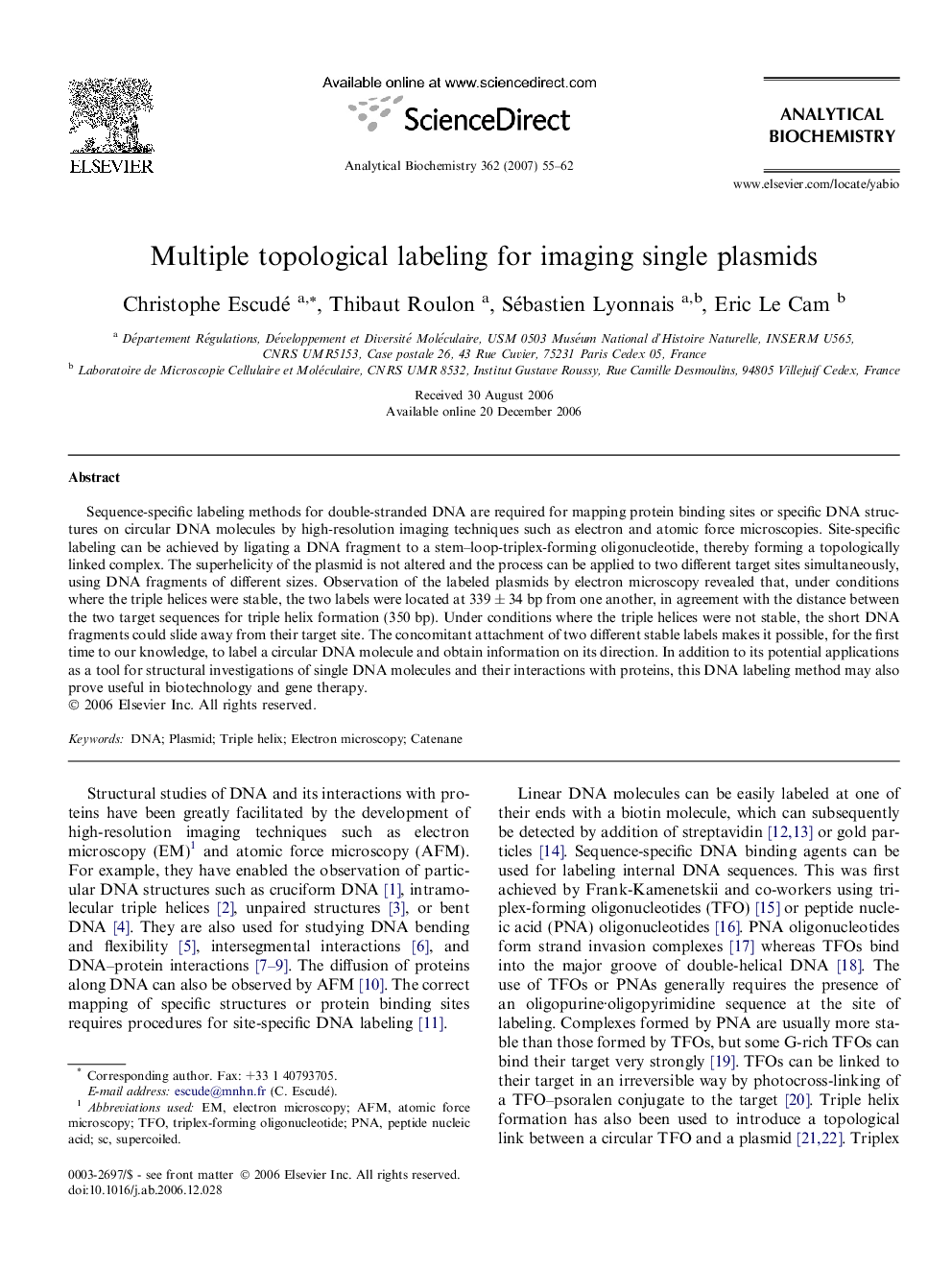| Article ID | Journal | Published Year | Pages | File Type |
|---|---|---|---|---|
| 1177402 | Analytical Biochemistry | 2007 | 8 Pages |
Sequence-specific labeling methods for double-stranded DNA are required for mapping protein binding sites or specific DNA structures on circular DNA molecules by high-resolution imaging techniques such as electron and atomic force microscopies. Site-specific labeling can be achieved by ligating a DNA fragment to a stem–loop-triplex-forming oligonucleotide, thereby forming a topologically linked complex. The superhelicity of the plasmid is not altered and the process can be applied to two different target sites simultaneously, using DNA fragments of different sizes. Observation of the labeled plasmids by electron microscopy revealed that, under conditions where the triple helices were stable, the two labels were located at 339 ± 34 bp from one another, in agreement with the distance between the two target sequences for triple helix formation (350 bp). Under conditions where the triple helices were not stable, the short DNA fragments could slide away from their target site. The concomitant attachment of two different stable labels makes it possible, for the first time to our knowledge, to label a circular DNA molecule and obtain information on its direction. In addition to its potential applications as a tool for structural investigations of single DNA molecules and their interactions with proteins, this DNA labeling method may also prove useful in biotechnology and gene therapy.
